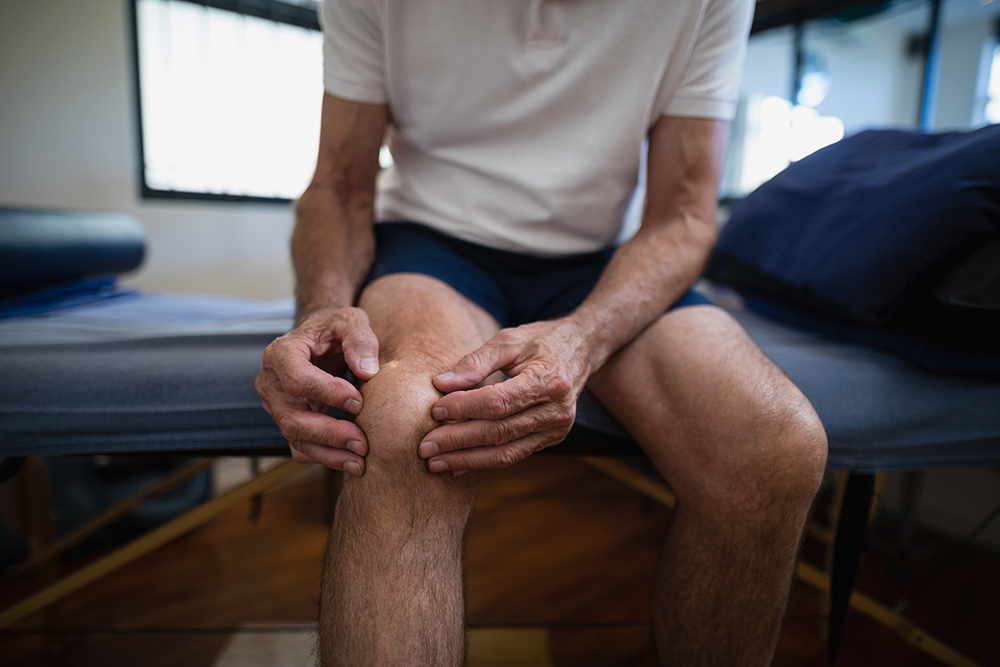Contents
Your knee gets put through a lot on a daily basis. It works to help you sit, stand, walk and exercise so that you can complete your everyday tasks. The menisci are essential contributors to your daily knee function. If you tear your meniscus, it can interfere with your overall quality of life.
A meniscus is a piece of cartilage that’s located between the shinbone and thighbone to work as a shock absorber. You have two menisci in each knee: There’s one located on the inside, the medial meniscus, and one on the outside, the lateral meniscus. If you tear this cartilage, it can lead to pain, swelling and stiffness that impacts your overall mobility. It’s a relatively common knee injury, affecting approximately 1 million people in the U.S. every year.
It’s important to seek treatment from a physical therapist for a meniscus tear. Not only can they help alleviate your pain and restore your mobility, but they can also guide you through exercises that you can perform at home in between sessions. That’s what we’re here to talk about.
We’ll walk you through a list of physical therapy exercises that can help move your meniscus tear along the path to recovery. We’ll also discuss other physical therapy treatments that may help your injury when you book an appointment at Lattimore Physical Therapy.
7 physical therapy exercises that can help your meniscus tear
When you tear your meniscus, it’s important that you learn safe and effective exercises from a physical therapist to reduce the risk of furthering the damage. With the right exercises, you can reduce your knee pain, strengthen and stretch the affected muscles, and help restore your knee joint’s range of motion.
During sessions, your physical therapist will show you exercises that can help your meniscus tear. Then they can design you an at-home exercise program to follow between sessions. The exercises may also come in handy for future knee injuries.
Some exercises that your physical therapist will advise you to perform at home may require additional equipment. They will also let you know how many sets to do of each one.
Here are seven physical therapy exercises that may improve a meniscus tear:
- Straight-leg raises — Lie on your back. Keep your left leg extended while bending your right leg so that your right foot is planted on the floor. Lift your left leg off the floor by strengthening your thigh muscles until it reaches approximately 45 degrees before lowering it down. Be sure to keep your back and pelvis on the floor. Repeat as directed by your physical therapist before switching to the right leg. This exercise helps to strengthen your hip muscles for improved meniscus mobility.
- Hamstring heel slides — Lie flat on the floor with your legs extended. Bend your left knee and slide your heel up toward your buttocks until you feel a gentle stretch. Hold it for up to five seconds before sliding your heel back down to the starting position. Repeat as directed by your physical therapist before switching to the right leg. Heel slides can help strengthen your hamstrings to support your knee joint that’s been affected by your injury.
- Calf stretches — Stand facing a wall. Step back slightly with your left leg so that your right leg is in front. Put your hands against the wall as you bend your right knee while keeping your left leg straight behind you. Bring your chest and right hip forward toward the wall until you feel a gentle stretch in your calf muscle. Hold it for up to 30 seconds before switching to the other leg. A calf stretch helps your meniscus tear by loosening up the tight muscles that are putting stress on the area.
- Quads sets — Sit or lie down on the floor, and place a rolled-up towel underneath your affected knee. Tighten your thigh muscles so that your knee presses down against the towel. Hold the position for up to six seconds before relaxing your muscles. Repeat as directed by your physical therapist. This exercise can help your symptoms by improving your knee joint’s support.
- Mini squats — Stand with your back against a wall. Your feet should be approximately 1 foot away from the wall and a shoulder width apart. Slightly bend your knees and slide down the wall until your knees are at a 15-degree angle. Keep your back and shoulders against the wall, and hold the position for up to 15 seconds before rising up to your starting position. Repeat as directed by your physical therapist. A mini squat can strengthen your quadriceps muscles without the excessive stress placed on your knee from a full squat.
- Hamstring curls — Lie flat on your stomach with your arms crossed under your head as a cushion. Slowly bend your left leg up toward your buttocks; then bring it back down. Repeat as directed by your physical therapist before switching legs. They may recommend wrapping an exercise band around your ankle for greater resistance. Hamstring curls are used to help people with meniscus tears as a hamstring strengthening exercise.
- Clamshells — Lie on your side with your legs bent at approximately 45 degrees and stacked on top of each other. You can place your arm under your head for support. Slowly raise the top knee as high as you can while keeping the other flat on the floor before lowering it back down to starting position. Repeat as directed by your physical therapist before switching sides. Clamshells can help meniscus tears by stretching the affected hip and knee muscles.
Many mild meniscus tears can heal on their own in up to six weeks, with these types of exercises accelerating the process. However, more severe tears may require surgery. Physical therapy exercises may be used as part of pre- or postrehabilitation treatment for severe meniscus tears.
Physical therapy treatment used for meniscus tears at Lattimore PT
Physical therapy should be one of the first courses of action when you sustain a meniscus tear. Not only can it help alleviate your pain, but it can improve the overall quality of your knee by increasing its strength and flexibility. It can also help restore the joint’s range of motion and your gait patterns.
At Lattimore Physical Therapy, we want to help your knee in every way. While the exercises we’ve gone over can help improve your knee’s strength and flexibility, there are other treatments that are often included in a personalized plan to help alleviate pain and restore your knee’s mobility.
Along with exercises, manual therapy is the other most common approach for helping a meniscus tear. It involves a physical therapist using their hands to manipulate the affected tissue and reduce pain. For a meniscus tear, your therapist will likely recommend joint mobilization. It involves gently moving your knee in repetitive movements to loosen up the tight, painful tissue surrounding the joint to improve its range of motion.
At Lattimore Physical Therapy, we pride ourselves on the effectiveness of our manual therapy techniques. We have 30 fully certified COMTs, with one in nearly every location. A COMT is a physical therapist with a Certification in Orthopedic Manual Physical Therapy. They can ensure that the right hands-on techniques are used to help heal your meniscus tear.
Contact our team today for more information or to schedule an initial appointment to learn physical therapy exercises that can help your meniscus tear.



